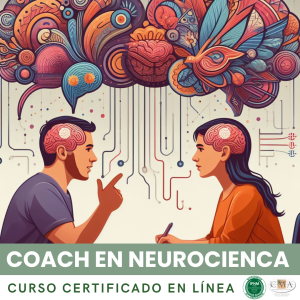
The developmental aspects of laughter, from childhood to adulthood, are a fascinating subject that sheds light on the evolution of this universal capacity throughout life. Laughter is present from the earliest months of existence and progresses gradually, following the major stages of an individual’s cognitive, emotional, and social development.
In infants, laughter typically appears around 3 to 4 months, in the form of chirping and reflex laughter in response to pleasant stimuli, such as tickling or exaggerated parental expressions. These early laughs are primarily an expression of wellbeing and pleasure, which strengthen attachment and early interactions with parental figures.
A 6-month-old baby who bursts into laughter when his mother plays “peek-a-boo” with him, well illustrates this function of laughter in the construction of emotional connection and intersubjectivity.
From 6 to 12 months, with the development of joint attention and intersubjectivity, the baby starts to laugh in response to unexpected or peculiar events, such as an object that suddenly vanishes or an amusing noise. Laughter becomes a way to share discoveries and surprises with one’s surroundings, and to seek social validation for reactions.
A 9-month-old baby who laughs boisterously when seeing his father don a silly hat shows how laughter is integrated into early learning and socialization processes.
With the acquisition of language and symbolic thought around 18 to 24 months, children start to appreciate simple wordplay, rhymes, and absurd situations. Laughter becomes a means to explore the possibilities of language, play with sounds and meanings, and develop their creativity and imagination.
A 2-year-old child who laughs upon hearing a whimsical nursery rhyme or inventing funny words highlights this playful and creative aspect of laughter in language development.
During the preschool period, from 3 to 6 years, the child develops a more elaborate sense of humor based on incongruity, exaggeration, and transgression of rules. Scatological jokes, puns, and fanciful stories are particularly appreciated at this age, as they push boundaries, affirm identity, and share moments of camaraderie with peers.
A group of 5-year-olds who laugh until they cry while telling “poo-poo” jokes in the playground perfectly illustrates this social and identity function of laughter at this age.
From 6-7 years, with the advent of logical thinking and the development of theory of mind, children begin to appreciate second-degree humor, subtler puns, and jokes that play on the intentions and mental states of characters. Laughter turns into a tool for social understanding and emotional regulation, helping manage conflicts, defuse stressful situations, and strengthen friendships.
An 8-year-old child who laugh heartily at his teacher’s ironic joke, while exchanging a knowing look with his neighbor, demonstrates how laughter becomes more sophisticated and complex both cognitively and socially.
During adolescence, laughter and humor take on an even more pronounced social and identity dimension. Dark, satirical, or absurd humor is often preferred, allowing them to distance themselves from childhood codes, question authority, and forge a distinct identity. Shared fits of laughter and in-jokes become markers of belonging to peer groups, reinforcing camaraderie and social cohesion.
A group of teenagers who burst into laughter watching a parody video on the internet, and then spend hours quoting lines and creating their own memes perfectly illustrates this identity and affiliative function of laughter at this age.
In adulthood, laughter continues to evolve and diversify based on individual personality, life experiences, and social contexts. It remains a powerful tool for managing stress, communicating, and sustaining social ties, while gaining new functions linked to adult roles and life demands.
A young couple who break into laughter recalling a humorous anecdote from their honeymoon, an executive who lightens the atmosphere of a tense meeting with a witty comment, or a group of 50-year-old friends sharing a hearty laugh while reminiscing about their youth, are all examples of laughter’s central place in adults’ emotional and relational lives.
For seniors, laughter remains a precious resource to promote wellbeing, resilience, and social connection in the face of aging challenges. Retrospective humor, based on shared memories and intergenerational transmission, takes a special place, maintaining a sense of continuity and meaning in one’s existence.
An octogenarian who laughs heartily while recounting a funny childhood story to her grandchildren, or a group of residents in a retirement home that improvise a comical skit during an activity, illustrates the integrative function and generativity of laughter in old age.
Understanding the developmental aspects of laughter allows the Laughter Therapist to finely tailor interventions according to the age and developmental challenges of their audience. By focusing on the specific functions of laughter at each life stage, they can create spaces conducive to authentic expression and mobilization of each person’s resources, thus fostering harmonious and fulfilled development from childhood to adulthood.
Key takeaways:
– Laughter appears from the first few months of life and evolves along the major stages of cognitive, emotional, and social development.
– In infancy (3-4 months), laughter is an expression of wellbeing that strengthens attachment to parental figures.
– Between 6 and 12 months, babies laugh in response to peculiar events, sharing their discoveries with their surroundings.
– With language acquisition (18-24 months), children appreciate word-play and develop their creativity through laughter.
– During preschool age (3-6 years), humor based on incongruity and rule-breaking allows the child to test limits and affirm their identity.
– From 6-7 years, children appreciate second-degree humor and use laughter as a tool for social understanding and emotional regulation.
– During adolescence, laughter takes on an identity and social dimension, reinforcing belonging to peer groups.
– In adulthood, laughter remains a tool for stress management, communication, and maintaining social ties, adapting to adult roles and life demands.
– For seniors, laughter promotes wellbeing, resilience, and social connection in the face of aging challenges, notably through retrospective humor and intergenerational transmission.
– Understanding the developmental aspects of laughter enables the Laughter Therapist to tailor interventions according to the age and specific challenges of their audience.
👉 To download docx (Editable) file click here : Click here
👉 To download PDF file click here : Click here
👉 To download MP3 file click here : Click here




